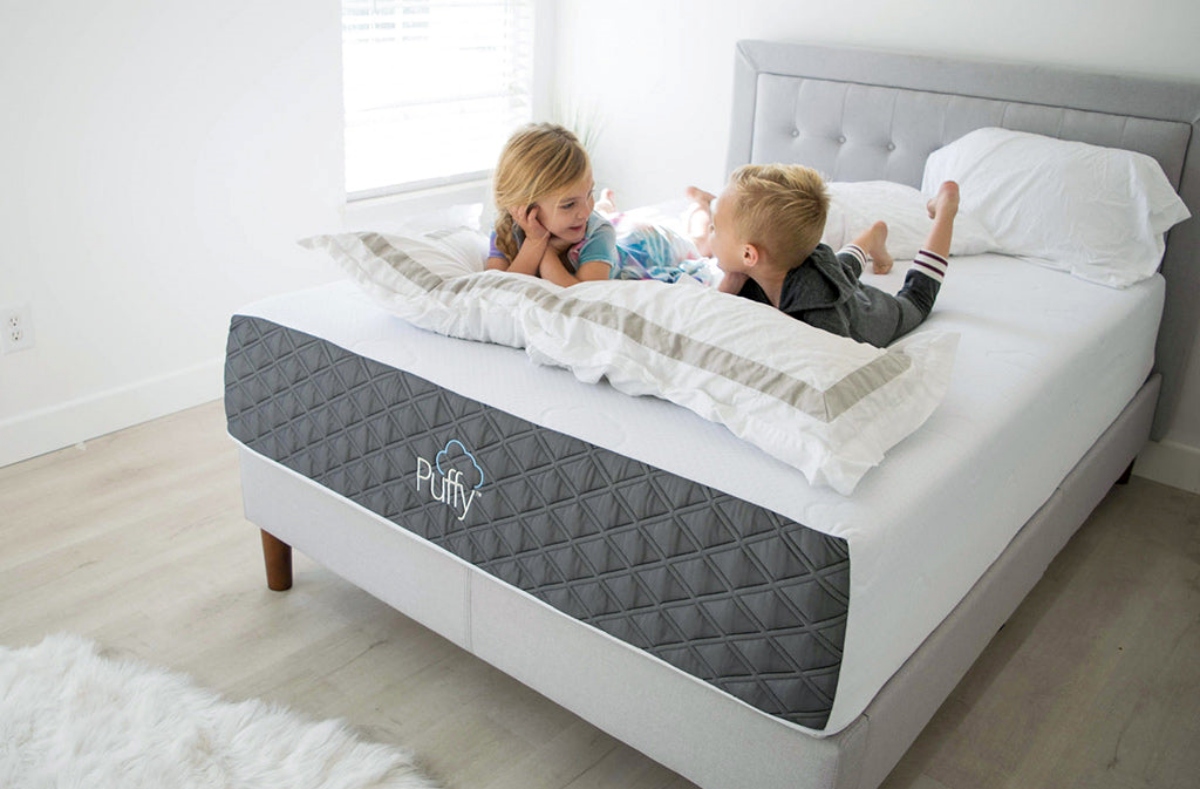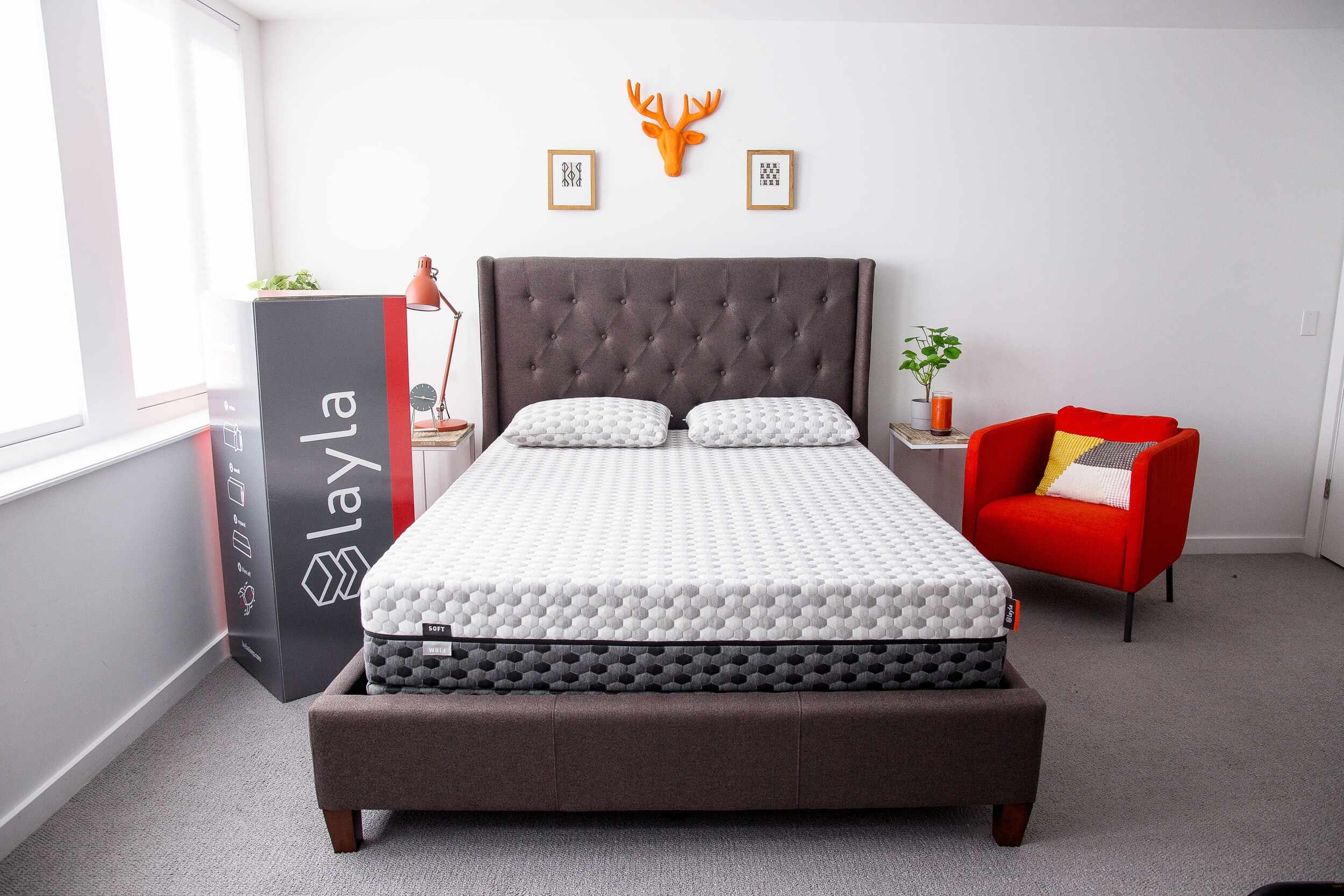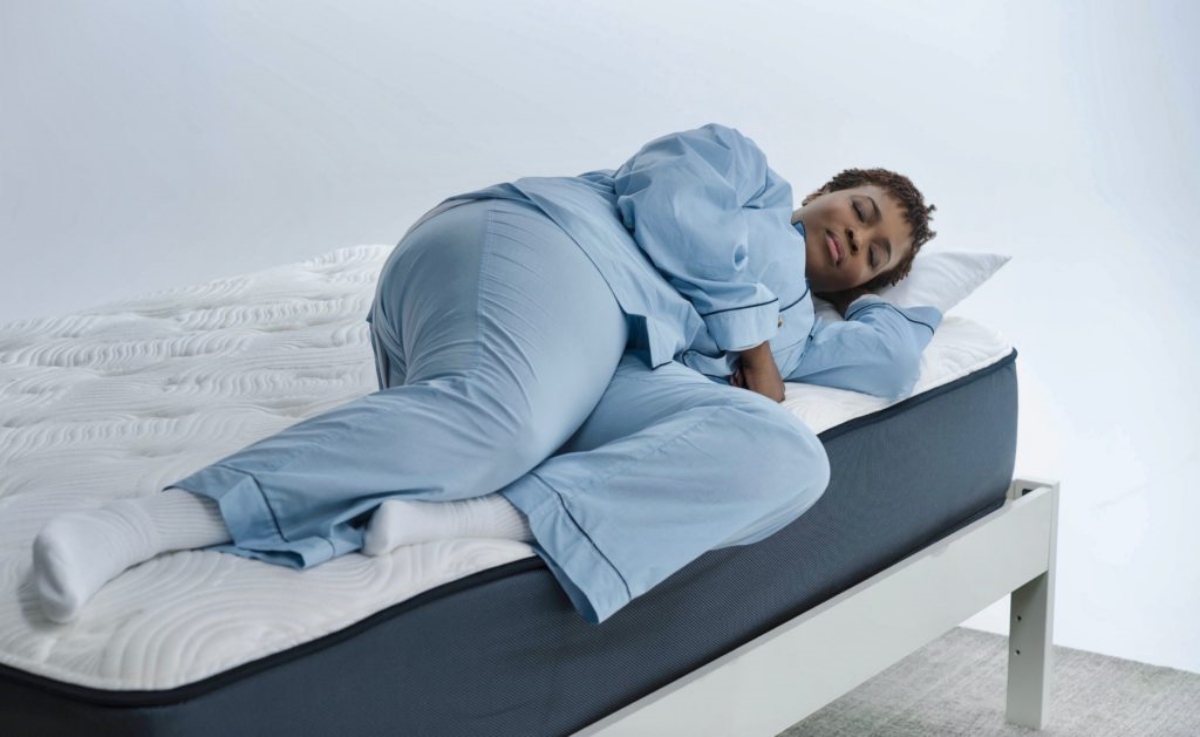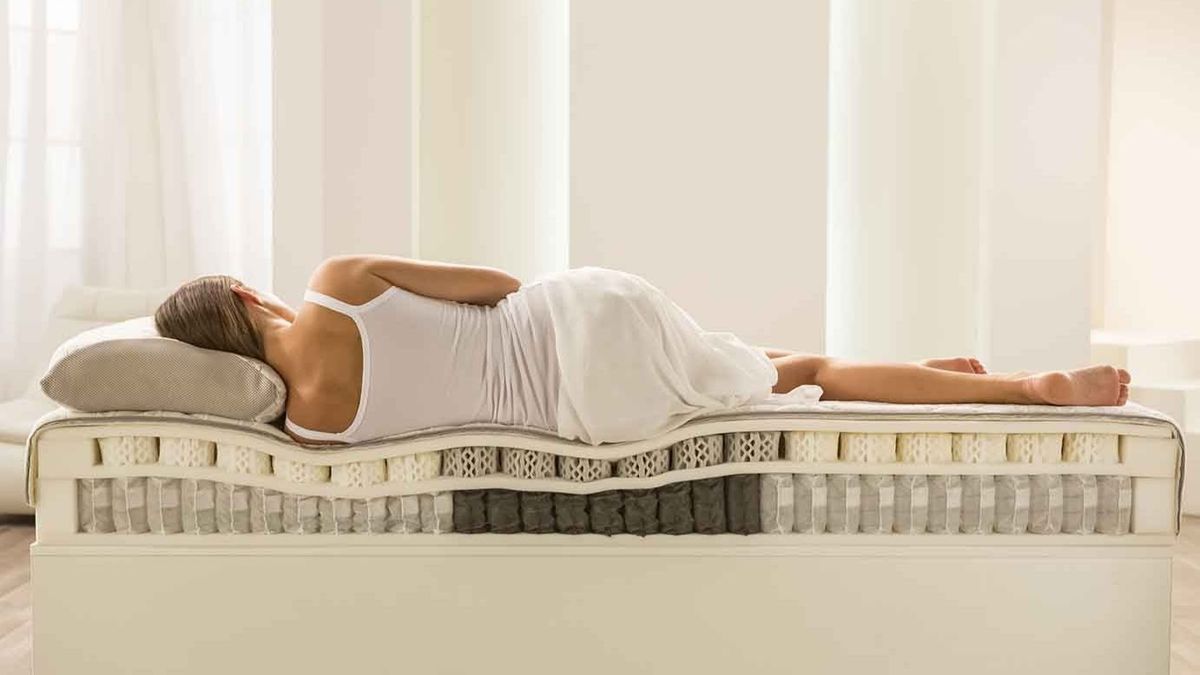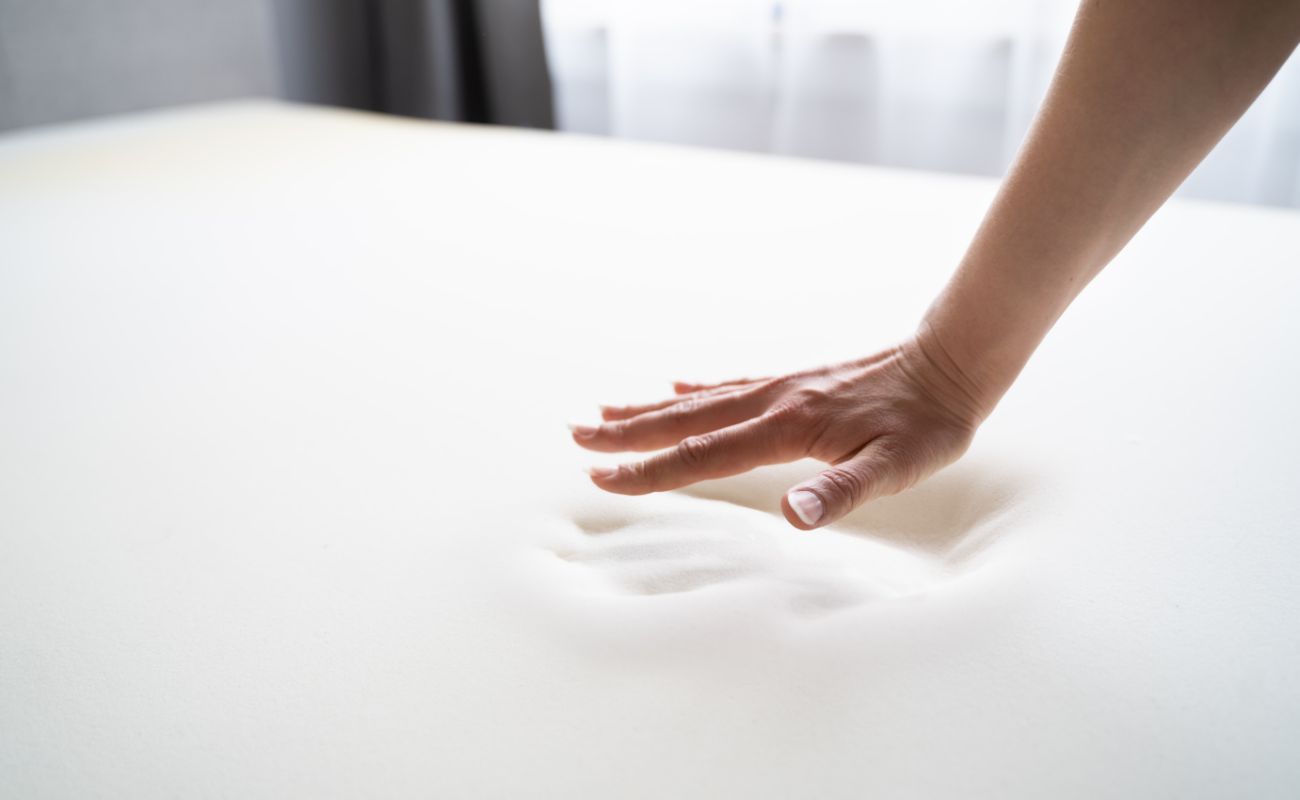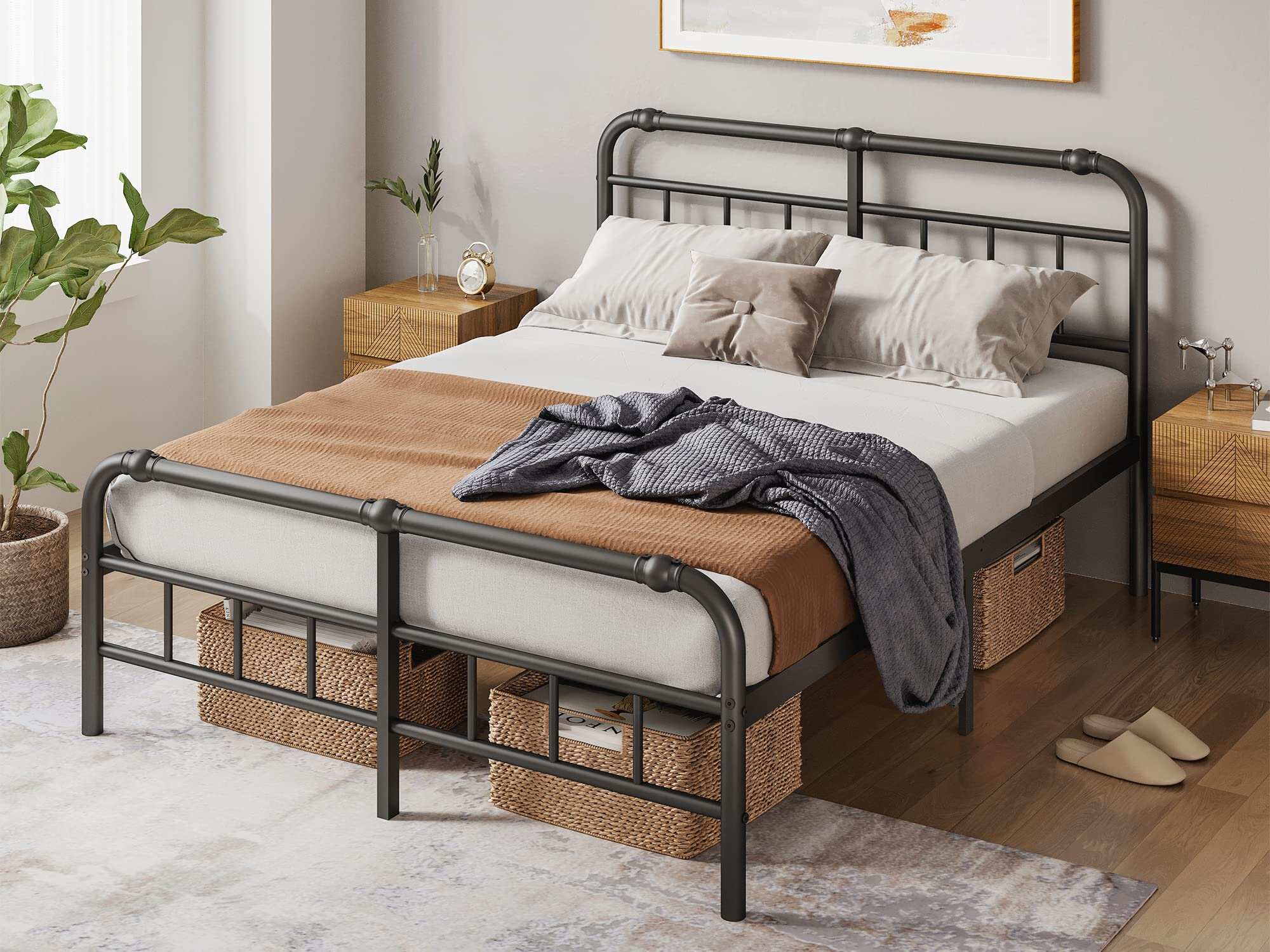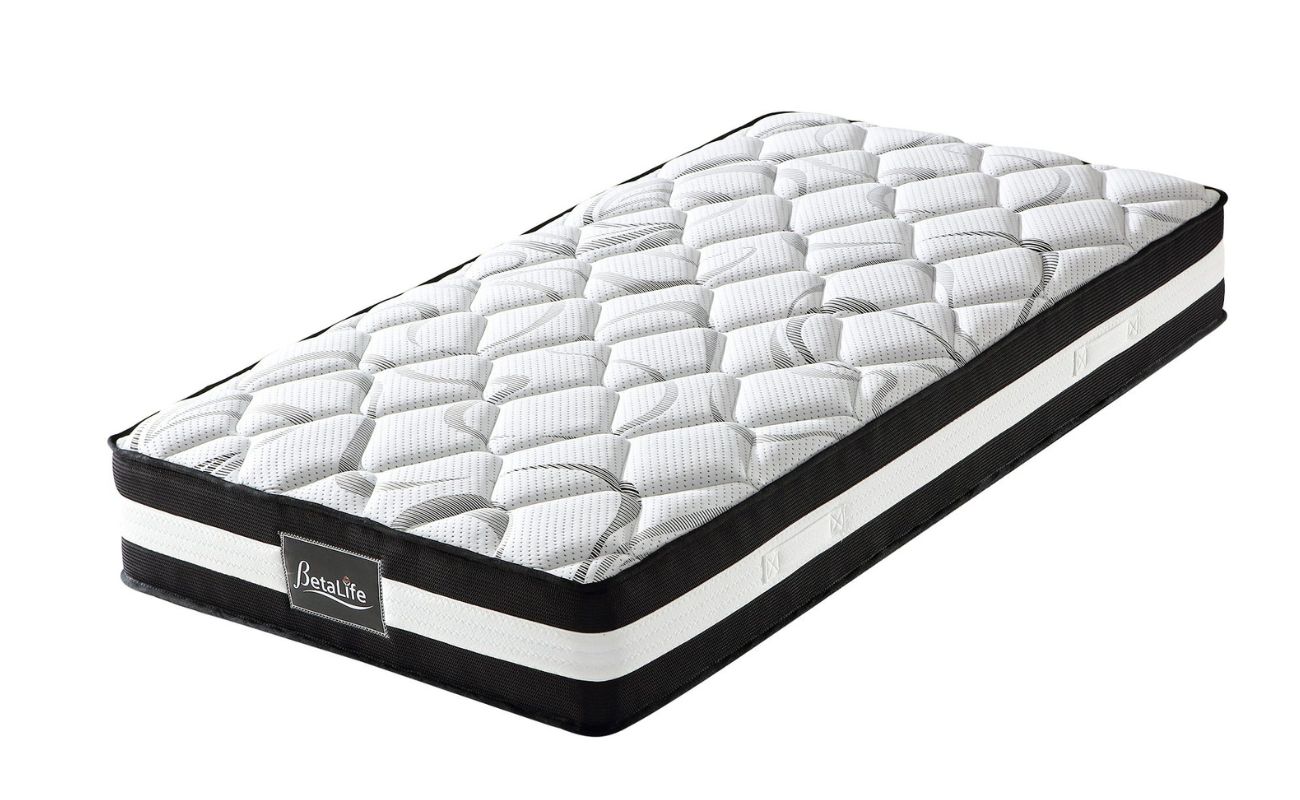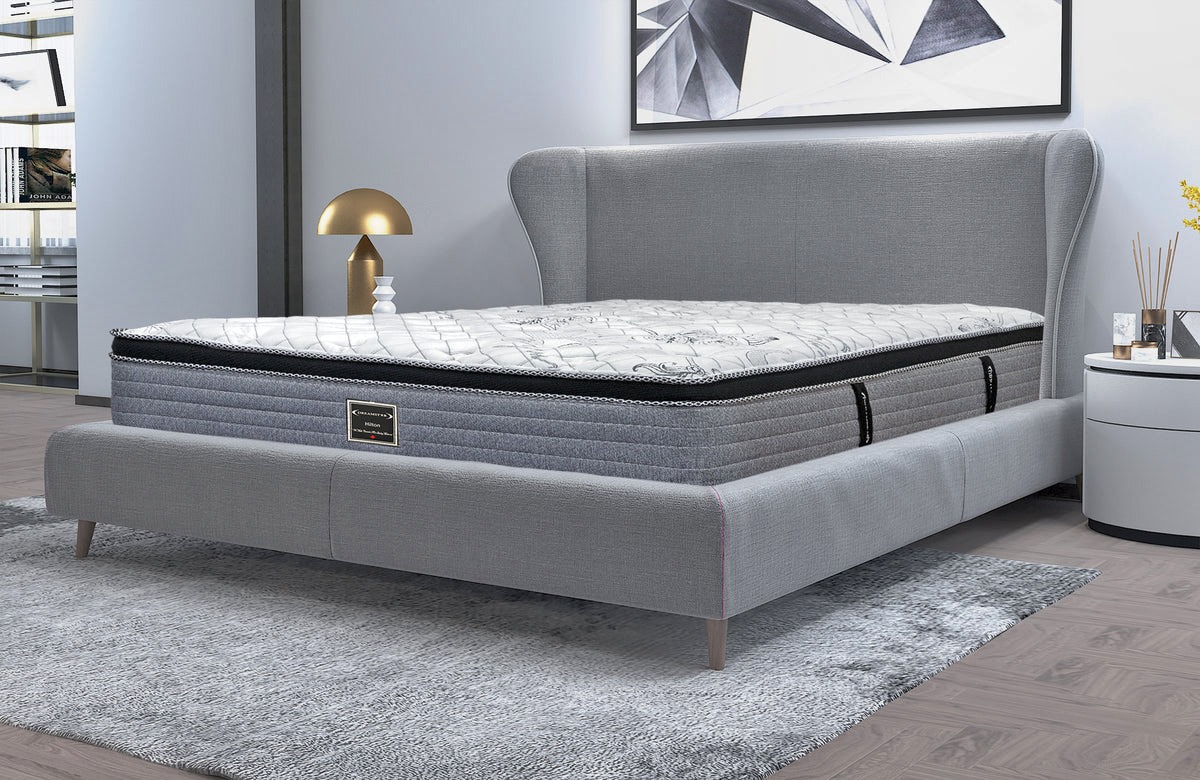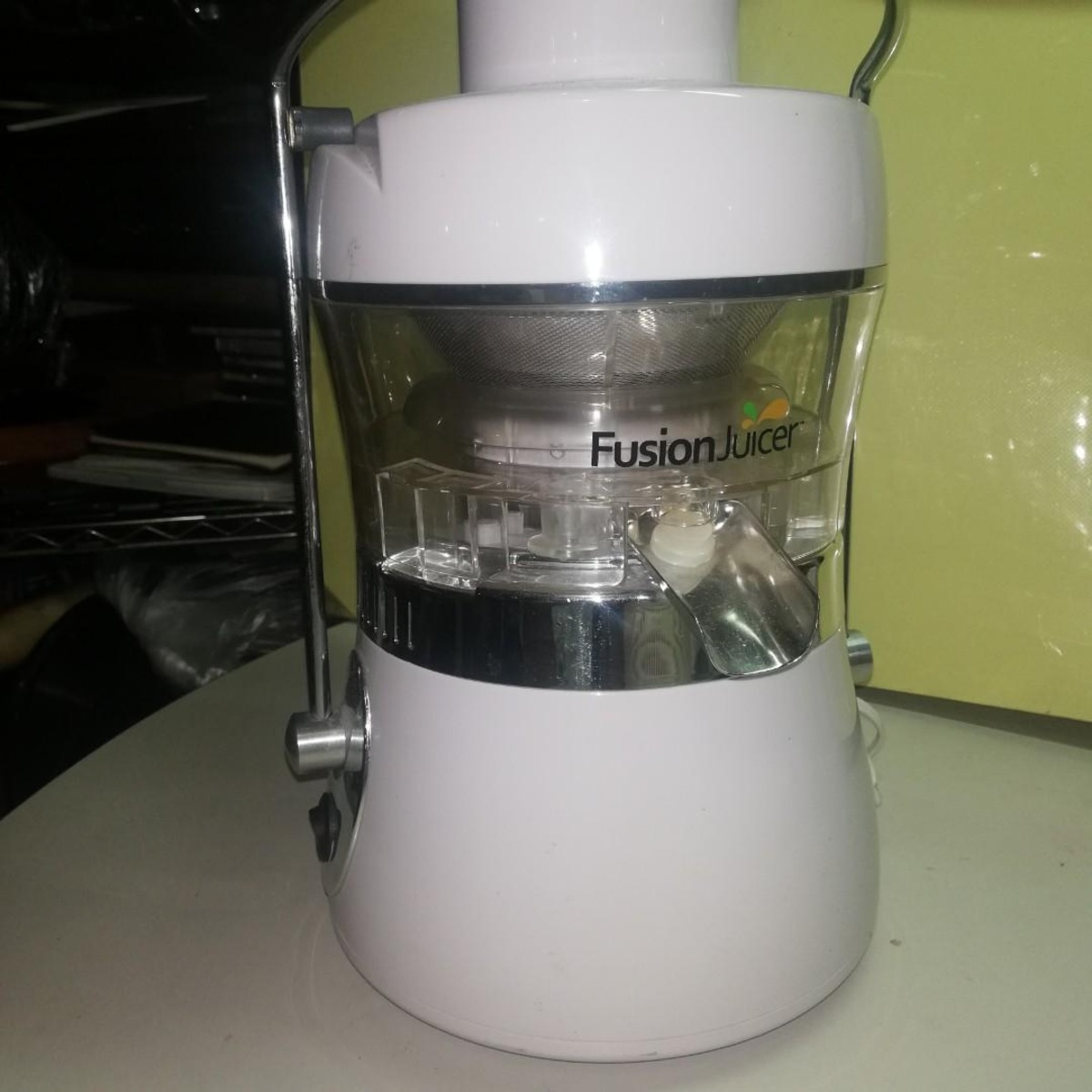Home>Furniture>Bedroom Furniture>What Type Of Mattress Is Best After Spinal Fusion
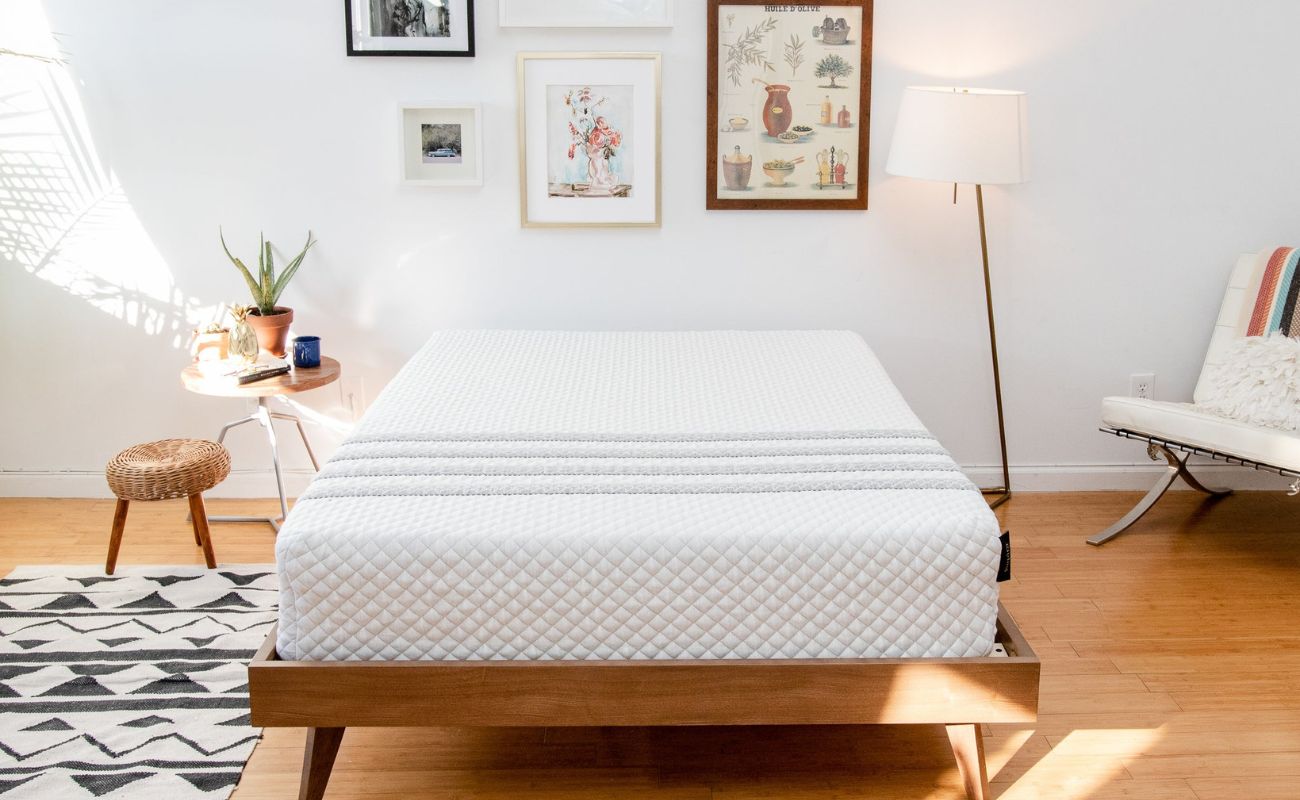

Bedroom Furniture
What Type Of Mattress Is Best After Spinal Fusion
Modified: May 6, 2024
Find the perfect mattress for your bedroom furniture after spinal fusion. Discover the best type of mattress to support your spine and promote comfortable sleep.
(Many of the links in this article redirect to a specific reviewed product. Your purchase of these products through affiliate links helps to generate commission for Storables.com, at no extra cost. Learn more)
Introduction
Welcome to the world of quality sleep and comfort! In this article, we will delve into the realm of bedroom furniture, specifically focusing on the importance of choosing the right mattress after spinal fusion surgery. Suffering from spinal fusion can be a challenging experience, and finding the perfect mattress to aid in your recovery is crucial.
Whether you’re undergoing spinal fusion for the first time or have already gone through the procedure, your body needs the right support and alignment to heal properly. A well-designed mattress tailored specifically for spinal fusion patients can make a world of difference in your recovery journey.
Before we dive into the intricacies of selecting the ideal mattress, let’s first gain a better understanding of spinal fusion and why it necessitates special considerations when it comes to bedding.
Key Takeaways:
- The right mattress after spinal fusion surgery is crucial for pain relief, proper spinal alignment, and overall comfort. Memory foam, innerspring, latex, and adjustable beds offer unique benefits for recovery.
- Choosing a mattress tailored for spinal fusion patients, such as memory foam, innerspring, or latex, can significantly aid in the recovery process by providing customized support, pressure relief, and optimal spinal alignment.
Understanding Spinal Fusion
Spinal fusion is a surgical procedure performed to treat a variety of back conditions, such as spinal fractures, degenerative disc disease, or scoliosis. During the procedure, two or more vertebral bones are fused together using bone grafts, metal plates, screws, or rods, to stabilize the spine and reduce pain.
The surgery aims to eliminate motion between the fused vertebrae, providing stability, correcting deformities, and relieving pressure on nerves. While spinal fusion can bring much-needed relief and improve quality of life, the recovery process can be lengthy and challenging.
After undergoing spinal fusion, your body undergoes significant physiological changes. The fused vertebrae need time to heal and integrate, and during this period of recovery, it’s crucial to create a supportive environment that aids in the healing process.
One of the key areas to focus on post-spinal fusion surgery is selecting the right mattress. A well-suited mattress can alleviate pressure points, provide adequate support, and promote proper spinal alignment.
Now that we understand the importance of a suitable mattress, let’s explore why it is crucial for spinal fusion patients to prioritize their bedding choices.
Importance of a Good Mattress after Spinal Fusion
Choosing the right mattress is not just a matter of comfort; it plays a vital role in your spinal fusion recovery. Here are a few reasons why a good mattress is essential:
- Pain Relief: Spinal fusion surgery can leave you with residual pain and discomfort. A well-designed mattress can help alleviate pressure points, reduce pain, and promote better sleep.
- Proper Spinal Alignment: After spinal fusion, maintaining proper spinal alignment is crucial for healing and preventing future complications. A supportive mattress that follows the natural curves of your spine helps in achieving optimal alignment, reducing strain on the fused area.
- Support and Posture: A firm and supportive mattress provides the necessary support for your body, helping distribute your weight evenly, and preventing misalignment. This support is particularly important, as your spine needs to be properly supported while it heals.
- Reduced Motion Transfer: After spinal fusion surgery, excessive movement can disrupt the healing process and cause discomfort. A mattress that minimizes motion transfer ensures that any movement you make during sleep doesn’t disturb your healing spine.
- Comfort and Quality Sleep: Restful sleep is essential for healing and overall well-being. A comfortable mattress offers the right level of cushioning and responsiveness, ensuring you can relax and sleep soundly, promoting a faster recovery.
Now that we understand the importance of choosing the right mattress after spinal fusion, let’s explore the factors to consider when selecting the ideal mattress for your post-operative needs.
Factors to Consider when Choosing a Mattress
Selecting the perfect mattress after spinal fusion requires careful consideration. Here are some key factors to keep in mind:
- Support: Look for a mattress that offers firm support to ensure proper spinal alignment. It should provide enough support to prevent sinking and promote even weight distribution.
- Comfort: Opt for a mattress that offers a balance of comfort and support. Consider your personal preferences, whether you prefer a plush or firmer surface, to ensure a good night’s sleep and minimize discomfort.
- Pressure Relief: A mattress that relieves pressure points is essential for post-spinal fusion recovery. Look for materials like memory foam that conform to your body shape, relieving pressure on sensitive areas.
- Spine Alignment: Proper alignment of the spine is crucial for healing. Look for a mattress that promotes proper spinal alignment, ensuring that your body rests in a neutral position.
- Edge Support: Edge support prevents sagging and gives you a stable surface to sit or sleep on. This can be particularly helpful when getting in and out of bed after spinal fusion surgery.
- Motion Isolation: Consider a mattress with good motion isolation to prevent disturbances caused by movements. This is especially important if you have a partner who moves a lot during sleep.
- Breathability: Look for a mattress with good airflow and moisture-wicking properties to keep you cool and comfortable throughout the night.
- Durability: A mattress that is built to last will ensure long-term comfort and support. Look for high-quality materials and construction that can withstand the test of time.
Keep these factors in mind as you explore different mattress options suitable for your spinal fusion recovery. In the following sections, we will delve into specific mattress types that are well-suited for spinal fusion patients.
Types of Mattresses Suitable for Spinal Fusion Patients
When it comes to selecting a mattress for your spinal fusion recovery, certain types of mattresses are more suitable than others. Let’s explore some of the top options:
- Memory Foam Mattresses: Memory foam mattresses are known for their contouring ability and pressure-relieving properties. They mold to the shape of your body, providing customized support and alleviating pressure points. Memory foam mattresses are also effective in absorbing motion, which can be beneficial for a more peaceful sleep after spinal fusion.
- Innerspring Mattresses: Innerspring mattresses are a classic choice, offering a combination of support and comfort. They provide a bouncy feel, with individually wrapped coils that offer targeted support to different areas of your body. Look for an innerspring mattress with a pillow-top or plush surface for added cushioning.
- Latex Mattresses: Latex mattresses are known for their durability and responsiveness. They offer a natural and breathable sleep surface that contours to your body without sinking too much. Latex mattresses provide a good balance of support and comfort, making them a popular choice for spinal fusion patients.
- Hybrid Mattresses: Hybrid mattresses combine the best of both worlds by incorporating elements of both memory foam and innerspring mattresses. They typically have a layer of memory foam on top and pocketed coils for support. Hybrid mattresses offer the benefits of pressure relief, support, and motion isolation, making them a great choice for spinal fusion patients seeking a combination of comfort and responsiveness.
- Adjustable Beds: While not technically a mattress, adjustable beds are worth considering for spinal fusion patients. These beds allow you to adjust the position of your upper body and legs, providing personalized support and relieving pressure on your spine. Adjustability can be beneficial for finding the most comfortable sleeping position and facilitating the healing process.
It’s important to note that individual preferences and specific recovery needs may vary. It’s recommended to consult with your healthcare provider or orthopedic specialist to determine the best mattress type for your unique situation.
Now, let’s explore specific details about different mattress types to help you make an informed choice for your spinal fusion recovery.
A medium-firm memory foam or hybrid mattress is often recommended after spinal fusion surgery. This type of mattress provides the right balance of support and comfort for the spine.
Read more: What Is The Best Mattress Type
Memory Foam Mattresses for Spinal Fusion Recovery
Memory foam mattresses have gained immense popularity due to their ability to provide excellent support and pressure relief. These mattresses are a great option for spinal fusion patients looking for optimal comfort and a peaceful sleep environment.
The key characteristic of memory foam is its ability to contour to your body shape, ensuring even weight distribution and alleviating pressure points. This feature is particularly beneficial for spinal fusion patients, as it helps relieve discomfort and promotes proper spinal alignment during the healing process.
When selecting a memory foam mattress for spinal fusion recovery, consider the following factors:
- Thickness and Density: Look for a mattress with a thickness of at least 8 inches for adequate support. The density of the memory foam is also important, with higher densities offering firmer support and better durability.
- Top Layer and Cooling Properties: Many memory foam mattresses come with a cooling gel-infused top layer or other cooling technologies to regulate body temperature and prevent overheating during sleep.
- Supportive Base Layer: Ensure that the mattress has a supportive base layer, typically made of high-density foam or supportive coils, to provide stability and prevent sagging.
- Motion Isolation: Memory foam mattresses excel at isolating motion, making them suitable for couples or if you are easily disturbed by your partner’s movements during sleep.
- Warranty and Trial Period: Look for mattresses with a generous warranty and trial period, allowing you to test the mattress and ensure it’s the right fit for your needs.
Keep in mind that memory foam mattresses can vary in terms of firmness, so it’s essential to choose one that suits your comfort preferences. If you prefer a softer feel, opt for a memory foam mattress with a higher plushness level.
Overall, memory foam mattresses provide excellent support, pressure relief, and comfort for spinal fusion recovery. Be sure to research different brands and models to find the best memory foam mattress that meets your specific requirements.
Next, let’s explore the benefits of innerspring mattresses for spinal fusion patients.
Innerspring Mattresses for Spinal Fusion Patients
Innerspring mattresses have long been a popular choice for their traditional, bouncy feel and reliable support. These mattresses are constructed with a system of coil springs, which provide excellent support and promote proper spinal alignment for spinal fusion patients.
When selecting an innerspring mattress for spinal fusion recovery, consider the following factors:
- Coil Count and Quality: Look for a mattress with a higher coil count, as this indicates better support and durability. Additionally, consider the thickness and gauge of the coils, as these factors contribute to the overall support and responsiveness of the mattress.
- Pillow-top or Plush Surface: To enhance comfort and cushioning, consider an innerspring mattress with a pillow-top or plush surface. This extra layer of padding can help alleviate pressure points and provide a softer sleeping surface.
- Edge Support: Spinal fusion patients may benefit from stronger edge support for stability when getting in and out of bed. Look for reinforced edges or dedicated edge support systems that prevent sagging and create a consistent sleeping surface.
- Isolated Coils: Some innerspring mattresses feature individually wrapped coils, which provide targeted support and minimize motion transfer. This can be beneficial if you have a partner who moves around during sleep.
- Temperature Regulation: Innerspring mattresses tend to have better airflow than other mattress types, which can help regulate body temperature and prevent overheating during sleep.
- Warranty and Trial Period: Always check the warranty and trial period offered by the manufacturer. This allows you to test the mattress and ensure it meets your comfort and support needs.
Innerspring mattresses are known for their responsive feel and support. They provide a firmer and more traditional surface, which can be preferred by some individuals for spinal fusion recovery. However, keep in mind that the level of firmness can vary among innerspring mattresses, so try out different models to find the right balance of support and comfort for your needs.
Next, let’s discuss the benefits of latex mattresses for spinal fusion patients.
Latex Mattresses for Spinal Fusion Recovery
Latex mattresses offer a unique blend of support, comfort, and durability, making them a great choice for spinal fusion patients. Latex is a natural material derived from the sap of rubber trees, and it provides a responsive and contouring sleep surface.
Here are some key benefits of latex mattresses for spinal fusion recovery:
- Responsive Support: Latex mattresses offer a balanced level of support, contouring to your body shape and providing optimal spinal alignment. They respond quickly to your movements, adapting to your body and relieving pressure points.
- Pressure Relief: Latex has inherent properties that allow it to redistribute weight evenly, reducing pressure on specific areas of your body. This can be particularly beneficial for spinal fusion patients who may experience discomfort or sensitivity in certain regions.
- Breathability: Latex mattresses are known for their breathability, allowing air to circulate and dissipate heat. This helps regulate your body temperature, ensuring a cooler and more comfortable sleep environment.
- Hypoallergenic: Latex is naturally hypoallergenic and resistant to dust mites, mold, and mildew. This makes latex mattresses an excellent choice for individuals with allergies or sensitivities, promoting a healthier sleep environment.
- Durability: Latex mattresses are highly durable and can last for many years without losing their supportive properties. They have a reputation for maintaining their shape and resilience over time.
- Natural and Eco-Friendly: If you prefer an eco-friendly sleep option, latex mattresses are a great choice. They are made from natural materials and are often free from harmful chemicals and toxins.
- Customizable Options: Latex mattresses are available in different firmness levels, allowing you to choose the one that best suits your needs and preferences. You can opt for a softer surface or a firmer feel, depending on your comfort requirements.
When looking for a latex mattress for spinal fusion recovery, consider factors such as the type of latex used (natural or synthetic), the thickness and density of the latex layers, and the overall construction of the mattress.
Keep in mind that individual preferences may vary, so it’s important to test out different latex mattresses and consider your specific recovery needs. Consulting with your healthcare provider or orthopedic specialist can also provide valuable insights and recommendations.
Now, let’s explore the benefits of adjustable beds for spinal fusion patients.
Adjustable Beds for Spinal Fusion Patients
Adjustable beds are not traditional mattresses but specialized sleep systems that offer personalized positioning options. These beds consist of a mattress placed on a motorized base that allows you to adjust the position of your upper body and legs. They are particularly beneficial for spinal fusion patients during the recovery process.
Here are some key benefits of adjustable beds for spinal fusion patients:
- Customized Support: Adjustable beds allow you to elevate the upper body and legs to find the most comfortable position for your spine. This flexibility helps relieve pressure on the fused area and promotes optimal spinal alignment.
- Enhanced Comfort: With an adjustable bed, you can easily find a position that provides maximum comfort and relaxation. Whether you prefer a slight incline, elevated feet, or a zero-gravity position, adjustable beds can accommodate your specific sleep preferences.
- Motion Control: Adjustable beds allow you to adjust your sleeping position without disturbing your partner. This is particularly beneficial if you have different sleep preferences or if movement can cause discomfort during the healing process.
- Added Convenience: Adjustable beds offer additional features such as built-in massage settings, USB ports, and remote controls, providing convenience and a luxurious sleep experience.
- Assistance with Daily Activities: Beyond sleep, adjustable beds can assist with activities such as reading, watching TV, or working on a laptop, providing ergonomic support and reducing strain on your spine.
When choosing an adjustable bed, consider factors such as the range of motion, control options, motor quality, and additional features. It’s important to ensure the bed is sturdy, reliable, and backed by a warranty for peace of mind.
Remember, adjustable beds work in conjunction with a compatible mattress, so it’s crucial to choose a mattress that provides optimal support and comfort when used with the adjustable base.
Consulting with your healthcare provider or orthopedic specialist can help determine if an adjustable bed is suitable for your specific recovery needs and provide guidance on the best options available.
Now that we’ve explored various mattress and bed options, let’s conclude our discussion on choosing the right mattress after spinal fusion.
Read more: What Is The Best Type Of A Mattress
Conclusion
Choosing the right mattress is a crucial decision for spinal fusion patients. A good mattress and sleep environment can significantly aid in the recovery process and promote overall comfort and well-being.
Throughout this article, we have explored the importance of selecting the right mattress after spinal fusion surgery. We discussed the factors to consider, including support, comfort, pressure relief, and proper spinal alignment. Different mattress types, such as memory foam, innerspring, latex, and even adjustable beds, were explored, each with their unique benefits for spinal fusion recovery.
Memory foam mattresses excel in pressure relief and contouring to the body’s shape, providing customized support. Innerspring mattresses offer a traditional and bouncy feel, with good support and motion isolation. Latex mattresses provide a responsive and durable sleep surface, promoting proper spinal alignment. Adjustable beds offer personalized positioning options, allowing for customized comfort and support.
Ultimately, the ideal mattress choice will depend on individual preferences, recovery needs, and guidance from healthcare professionals. It’s important to consider factors such as support, comfort, pressure relief, motion isolation, durability, and additional features when making your decision.
Remember, selecting a mattress is an investment in your health and well-being. Take the time to research different options, read customer reviews, and consider the trial periods and warranties offered by manufacturers. Consulting with your healthcare provider or orthopedic specialist can provide valuable insight and recommendations based on your unique situation.
With the right mattress, optimized sleep environment, and proper care, your spinal fusion recovery journey can be more comfortable and conducive to healing. Embrace the power of a supportive and comfortable mattress to enhance your quality of sleep and overall recovery experience.
Wishing you a peaceful and restorative sleep on your path to recovery!
Curious about other sleep solutions that cater to specific needs? If you're wondering how different mattresses cater to orthopedic conditions beyond spinal fusion, our next piece shines a light on specialized sleeping surfaces. Delving into the details of an orthopedic mattress might give you deeper insight into how targeted bedding can improve overall sleep quality and spinal health.
Frequently Asked Questions about What Type Of Mattress Is Best After Spinal Fusion
Was this page helpful?
At Storables.com, we guarantee accurate and reliable information. Our content, validated by Expert Board Contributors, is crafted following stringent Editorial Policies. We're committed to providing you with well-researched, expert-backed insights for all your informational needs.
